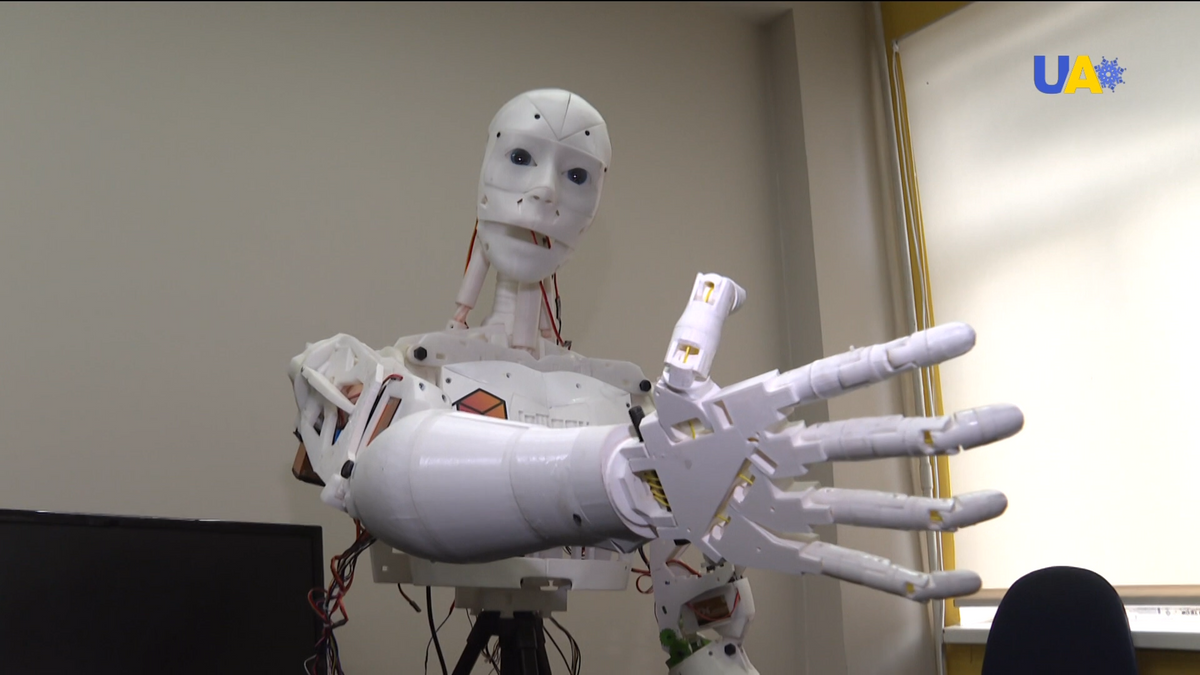Your weekly selection of awesome robot videos
Video Friday is your weekly selection of awesome robotics videos, collected by your friends at IEEE Spectrum robotics. We’ll also be posting a weekly calendar of upcoming robotics events for the next few months; here’s what we have so far (send us your events!):
ICRA 2022: 23–27 May 2022, Philadelphia
ERF 2022: 28–30 June 2022, Rotterdam, Netherlands
CLAWAR 2022: 12–14 September 2022, Açores, Portugal
Let us know if you have suggestions for next week, and enjoy today's videos.
He won the Ukrainian start-up competition, participated in the IT world exhibition in Lisbon and attracted the attention of European universities. This is about the development of MARKOBOT by 12-year-old inventor Mark.
Mark learned robotics with the help of the Ukrainian Robotics Academy, which teaches robotics classes in Ukrainian, Russian, English, and Arabic to students starting at 9 years of age.
[ Ukrainian Robotics Academy ]
Skydio has improved its autonomous capture of vertical structures, giving you yet another excuse to buy one of its drones. Like you needed another excuse!
[ Skydio ]
My takeaway from this: IT’S RIDE-ABLE.
[ Deep Robotics ]
A hydraulic quadrotor? Sure, why not!
I’m not totally sold on this right off the bat, because I feel like there may be more practical ways to accomplish something similar without the complexity of a hydraulic drive. But certainly an interesting approach.
[ Flowcopter ] via [ Gizmodo ]
Oh good, the robot cockroaches are evolving.
[ JHU ]
Aww, <3 Moxie!
I love the robot. Not the soda. The robot.
[ Embodied ]
Noodle-sorting robots with FORKS FOR HANDS!
Luka-Beverage is a flexible service robot for handling bottles and heavy crates in retail stores and for beverage manufacturers. Using a patented universal gripper, new AI image processing technologies and a 3D-navigation system, the robot knows exactly where goods are located and how to pick them up.
[ Fraunhofer ]
Critical task for any robotic manipulator: kiwi wiggling.
Also, pen flipping.
[ TU Berlin ]
Meet “FingerPrint,” our latest monolithically 3-D printed, soft fingertip haptic device based on an origami mechanism that embeds multiple foldable vacuum actuators and fluidic channels. It produces 4-DoF of motion on the finger pad with tunable haptic forces and torque for skin shear, pressure, and vibro-tactile feedback.
[ CHARM Lab ]
There are quadrotors that are “fault-tolerant,” and then there are quadrotors that can recover from some really crazy stuff. With motion capture, but still!
[ UZH ]
Get ready for a new chapter in logistics with our fully electric VoloDrone. Watch the video to find out how we plan to make operations more stable, efficient, and sustainable, in collaboration with our partner, top global logistics supplier DB Schenker.
[ Volocopter ]
Salmon fillets look weirdly challenging to handle.
[ Soft Robotics ]
Striving to improve touch sensing in robotics, scientists at the Max Planck Institute for Intelligent Systems developed a thumb-shaped sensor with a camera hidden inside and trained a deep neural network to infer its haptic contact information.
[ Max Planck ]
Augmented reality application built for the Microsoft HoloLens 2 that allows users to supervise and communicate with multiple robotic clients.
[ UT Austin ]
Built from the ground up to navigate dynamic, GPS-denied environments autonomously ExynAI is capable of mapping complex structures without the need of a pilot or existing infrastructure. Powered by Autonomy Level 4, our robots can explore beyond visual line of sight—keeping survey teams safe and logging critical data.
[ Exyn ]
This GRASP SFI presentation is by Johannes Betz from the University of Pennsylvania, on “Autonomous Handling at the Limits—Winning the Indy Autonomous Challenge.”
The rising popularity of self-driving cars has led to the creation of an additional research and development branch in the recent years: Autonomous racing. Researchers are developing algorithms and hardware for high performance race vehicles which aim to operate autonomously on the edge of the vehicles limits: High speeds, high accelerations, high computation power, low reaction time, adversarial environments. This talk will give an overview of the current efforts in the field, the main research outcomes and the open challenges we can solve with the help of autonomous Racing.
[ UPenn ]
Evan Ackerman is a senior editor at IEEE Spectrum. Since 2007, he has written over 6,000 articles on robotics and technology. He has a degree in Martian geology and is excellent at playing bagpipes.



